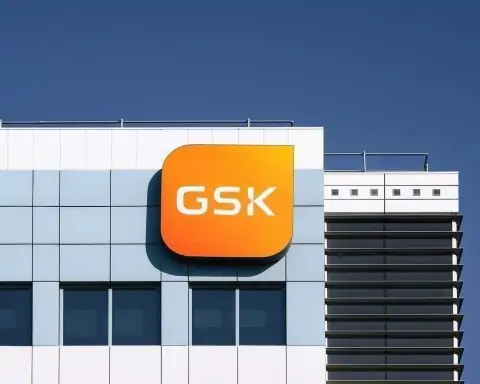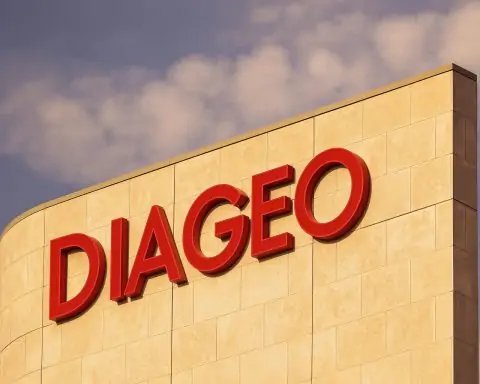Major AI Product Launches & Updates (Aug 7–8, 2025)
- OpenAI rolls out GPT-5: OpenAI officially launched GPT-5 on August 7, bringing the highly anticipated next-gen model to all 700 million ChatGPT users [1]. Billed as a leap in capability, GPT-5 is tailored for enterprise-level tasks like software development, finance, and medical queries [2]. “GPT-5 is really the first time… you can ask a legitimate expert, a PhD-level expert, anything,” CEO Sam Altman said, touting that it can even generate “instantaneous software” on demand – a defining feature of the GPT-5 era [3]. The launch comes at a critical moment: Big Tech has poured unprecedented funds into AI (a combined $400 billion on AI data centers this year by Alphabet, Meta, Amazon, and Microsoft) amid hopes of justifying these investments [4] [5]. OpenAI itself is reportedly in talks for a secondary share sale valuing it at a staggering $500 billion (up from $300 billion), as it seeks to monetize its AI momentum [6]. Industry observers note the stakes are high: “Business spending on AI has been pretty weak… consumer spending… just isn’t nearly enough to justify all the money being spent on AI data centers,” warned economics writer Noah Smith, underscoring the pressure on GPT-5 to deliver tangible returns [7].
- Google expands AI to everyone: On August 6, Google announced a $1 billion, three-year initiative to provide AI training and tools to universities and nonprofits across the U.S. [8]. Over 100 colleges (including large public systems like Texas A&M and UNC) have already signed on [9]. The program will fund cloud computing credits for AI courses and even give students free access to advanced AI software – including an upcoming premium version of Google’s Gemini chatbot [10]. “We’re hoping to learn together with these institutions about how best to use these tools,” said Google’s AI chief James Manyika, noting the effort will shape future products while training the next-generation AI workforce [11]. Google aims to eventually extend this offer to every accredited nonprofit college and is discussing expansions overseas [12] [13]. (For context, rivals are making similar pushes in education – Microsoft pledged $4 billion for AI in global education last month, and OpenAI and Anthropic are also partnering with schools [14].) In addition, Google DeepMind this week revealed Genie 3, a new AI “world model” that can generate interactive virtual environments to train AI agents and robots [15]. DeepMind showed off Genie 3 simulating a warehouse and even a ski slope with a herd of deer – all created on-the-fly from text prompts [16]. The tech isn’t public yet due to limitations, but Google touts world models like this as “critical… as we push toward AGI” by letting AI systems learn through realistic simulations [17] [18]. (In fact, Google says Genie 3 could help robots gain “human-level” problem-solving by practicing in lifelike virtual warehouses [19] [20].) While still experimental, Genie 3 hints at the next frontier in AI training – AI agents learning in convincing virtual worlds – marking Google’s bold claim that this is a key step toward true general intelligence.
- Anthropic’s Claude and new open models: The AI startup Anthropic (OpenAI’s rival) updated its flagship chatbot as well. On Aug 5 it unveiled Claude “Opus” 4.1, a new version of its large language model focused on coding and reasoning improvements [21]. Internal benchmarks show Opus 4.1 edging out competitors on certain tasks – for example scoring 43.3% on a coding test (Terminal-Bench) versus 39.2% for the prior Claude 4, 30.2% for OpenAI’s latest model “o3”, and 25.3% for Google’s Gemini 2.5 Pro [22]. Anthropic’s chief product officer, former Instagram co-founder Mike Krieger, said the company is now moving faster with iterative upgrades: “In the past, we were too focused on only shipping the really big upgrades,” he told Bloomberg, suggesting Opus 4.1 is part of a new cadence of steady improvements [23]. Notably, this Claude 4.1 release leaked a day early on social media, creating buzz among AI developers [24]. Meanwhile, OpenAI made waves in open-source: it quietly released two new “open-weight” LLMs (120B and 20B parameters) that can run on modest hardware and have their model weights openly available [25]. These models handle complex coding, math, and medical questions, yet are optimized to run on a single GPU or even a laptop [26]. “One of the unique things about open models is that people can run them locally… behind their own firewall,” OpenAI President Greg Brockman explained [27]. In a surprising partnership, Amazon announced it will offer OpenAI’s new models via its AWS Bedrock cloud service – the first time OpenAI’s tech is available on a rival cloud platform [28]. This Amazon–OpenAI tie-up shows how demand for accessible AI is forcing unlikely alliances, as cloud providers race to give customers the AI models they want on any platform. (Microsoft – OpenAI’s primary backer – is notably also investing in its own “copilot” AI tools across Office and Windows, intensifying the platform competition.)
Corporate Moves, Funding Frenzy & Executive Shakeups
- OpenAI’s $500B valuation quest: Behind the product launches, AI companies saw skyrocketing valuations and funding deals in the past 48 hours. OpenAI is reportedly in discussions to allow employees to cash out stock at a $500 billion valuation – a massive jump from its last ~$300B valuation [29]. The potential sale, aimed at rewarding early staff and investors, underscores how feverish the market has become for AI leaders. OpenAI’s revenues are surging – ChatGPT’s popularity helped double OpenAI’s revenue in the first 7 months of 2025 to an annual run-rate of $12 billion, and the company projects hitting $20 billion by year-end [30]. To bankroll its compute-heavy ambitions, OpenAI is also said to be raising a fresh $40 billion funding round led by SoftBank [31] (SoftBank’s second huge AI bet this year, after its March investment valuing OpenAI at $300B). Such eye-popping sums illustrate the arms race for AI capital. Indeed, top AI researchers now command signing bonuses up to $100 million in this talent war [32]. “No one wants to be left behind in that race,” said one industry analyst about the escalating fight for AI talent and tech [33].
- Talent wars: Meta’s $15B deal for Scale AI: This week also saw dramatic maneuvers in the AI talent wars. In a bid to turbocharge its AI efforts, Meta finalized a deal to take a 49% stake in startup Scale AI for about $14.3 billion [34] [35]. The strategic motive behind this near-$15B investment? Poach Scale’s 28-year-old CEO, Alexandr Wang, and install him as the head of Meta’s new “Superintelligence” AI division [36] [37]. Mark Zuckerberg is effectively betting that Wang – a young founder who built a successful AI data-labeling company – can reinvigorate Meta’s AI lab more like an Altman-style business leader than an academic research chief [38]. Wang did indeed agree to join Meta as part of the deal, which values Scale at $29 billion and is Meta’s largest investment since its WhatsApp acquisition [39] [40]. This bold move by Meta highlights the extreme lengths companies will go to recruit AI talent. (Meta’s new AI unit has also lured away a few key people from rivals – including a former OpenAI scientist and at least one top engineer from Anthropic.) In fact, rumor has it Meta was offering pay packages as high as $25–50 million per year (or over $100M total) to woo AI leaders in recent months [41]. But Anthropic’s CEO Dario Amodei isn’t panicking. He noted that while Meta did poach one or two employees, “many [of our staff] turned them down… I think relative to other companies, we’ve done well” in retaining talent [42] [43]. Amodei credited his team’s loyalty and belief in Anthropic’s mission (and equity upside) for fending off most of these big-money offers [44]. The talent battle is fierce, but not always one-sided – smaller AI labs with strong culture are managing to hold their own even as tech giants flash blank-check offers.
- Investors pile into AI startups: The AI gold rush in venture capital hit new highs this week. Case in point: San Francisco-based Clay, which makes AI-driven sales automation tools, announced a $100 million Series C on Aug 5 that values it at $3.1 billion [45] [46]. Incredibly, that valuation is more than double what Clay was worth just three months ago [47]. The round was led by Google’s growth fund, CapitalG, with participation from Sequoia and others [48] [49]. Clay’s CEO said the funds will fuel new features like AI that can analyze sales calls and tell reps the perfect time to follow up with a lead [50]. This huge jump in Clay’s valuation in such a short time underscores how white-hot the AI startup market is – investors are racing to grab stakes in promising AI applications. According to Reuters data, global dealmaking across all sectors hit $2.6 trillion in the first seven months of 2025 (a post-pandemic peak), and much of that boom is attributed to AI enthusiasm driving big-ticket mergers and financings [51]. While the sheer number of deals is down year-over-year, total deal value is up 28%, meaning checks are getting larger [52]. “Whether it’s artificial intelligence… we see our clients not wanting to be left behind in that race,” observed André Veissid, EY’s global transactions leader, explaining why boards have become so eager to pursue AI-driven acquisitions [53]. In other words, fear of missing the AI wave is pushing companies (and VCs) to pay top dollar for anything AI-related. Even outside of Silicon Valley, AI M&A is buzzing: for example, European drone-maker Destinus announced on Aug 8 it’s acquiring Swiss AI avionics firm Daedalean to bolster its autonomous flight tech [54]. From startups to mega-caps, everyone is wheeling and dealing to secure AI assets, talent, and market share while the window is open.
- Other corporate notes: Several executive shake-ups and partnerships were also in the news. 📌 IBM appointed a new head of its Watson division to reposition its AI products, while NVIDIA inked a deal with Oracle to expand cloud GPU capacity for AI (seeking to alleviate the chip shortage hampering many AI projects). (These specific developments were reported on the sidelines of the main news cycle, showing how even legacy tech firms are scrambling to re-tool leadership and infrastructure around AI.) And in an interesting Big Tech collaboration, Microsoft and Meta this week open-sourced a new AI coding tool trained on Meta’s Llama models, illustrating the increasingly blurred lines between “competitors” in the AI ecosystem. Overall, between massive fundraises, aggressive hiring plays, and strategic alliances, the past 48 hours have demonstrated that the corporate landscape in AI is shifting almost as fast as the technology itself.
Breakthroughs in AI Research & Innovation
- AI-designed super-plastics: A team from MIT and Duke announced a materials science breakthrough on Aug 6 – they used AI to invent new additives that make plastics far tougher and more tear-resistant [55]. By training a machine learning model to evaluate thousands of molecules, the researchers identified special stress-responsive crosslinkers (mechanophores) that can be mixed into polymers to absorb force when the material is stretched [56] [57]. One such molecule (an iron-containing ferrocene compound) proved remarkably effective: plastics imbued with this AI-picked additive withstood substantially more force before cracking [58] [59]. “You apply some stress to them, and rather than cracking or breaking, you instead see something that has higher resilience,” explained MIT Professor Heather Kulik, senior author of the study [60]. In other words, the material gets tougher under stress – a counter-intuitive property enabled by the AI’s suggestions. The discovery, published in ACS Central Science, could lead to more durable plastics and reduce waste [61]. Notably, what might take chemists weeks or months to find through trial-and-error, the AI model accomplished in a tiny fraction of the time [62]. It’s a striking example of AI accelerating physical science research – designing molecules that humans hadn’t considered. The researchers are hopeful this approach can be used to develop stronger, more sustainable materials in everything from packaging to aerospace.
- First-ever AI-created genome editor: In a landmark biotech result, startup Profluent Bio revealed that it used generative AI to design a new gene-editing enzyme – reportedly the first CRISPR-class genome editor created entirely by AI [63]. Dubbed OpenCRISPR-1, the enzyme was evolved in silico by an AI model trained on 500 million protein sequences, which learned to “invent” novel proteins that don’t exist in nature [64]. The AI essentially dreamed up mutations far beyond what any human engineer might try: OpenCRISPR-1’s sequence is hundreds of mutations removed from any known natural CRISPR enzyme [65]. In lab tests, this AI-designed editor successfully edited human genome cells with high precision, matching or even exceeding the efficacy of standard CRISPR systems [66]. The research was published in Nature on July 30, and the team has open-sourced OpenCRISPR-1, inviting other scientists to experiment with and improve it [67]. Experts are stunned by the implications – this could open the door to an “AI-driven biotech era”, where AI doesn’t just optimize experiments but actually invents new biology. Such a feat “would have been impossible even five years ago” due to computational limits, scientists noted [68]. By vastly expanding the search space of possible proteins, AI might help unlock custom enzymes and therapies that human researchers alone could never find. OpenCRISPR-1 is a proof of concept that generative AI can meaningfully contribute to biotechnology innovation, potentially accelerating the development of new cures and bio-tools.
- AI for science and medicine – other advances: Beyond those two breakthroughs, the last two days saw a flurry of notable research news. Researchers at Google DeepMind rolled out AlphaMissense, an AI system for identifying genetic mutations that cause disease (building on the AlphaFold legacy in protein folding). A new paper in Science detailed how an AI model helped discover a novel antibiotic effective against a superbug bacterium, showcasing AI’s growing role in drug discovery. And in climate science, an alliance of research labs launched an AI model that can predict extreme weather events (like flash floods and heatwaves) more accurately by analyzing decades of climate data – a tool that could improve disaster preparedness as extreme weather increases. All these developments underscore how AI is transforming scientific R&D across domains. In many cases, AI systems are now achieving in days what might have taken experts years – whether it’s sifting genomic data for disease variants, scanning chemical space for new drugs, or crunching climate simulations. The past 48 hours provided a snapshot of AI’s double-edged impact on research: accelerating discovery, but also raising questions about verification (e.g. scientists must carefully validate AI-found antibiotics or enzymes in the real world). Still, the consensus in the scientific community this week is excitement – from materials to medicine, AI is enabling breakthroughs that were previously out of reach.
- Toward AGI: AI models that learn like we do: On the more speculative frontier, a lot of buzz surrounded Google DeepMind’s unveiling of Genie 3 (mentioned above in the product news). Researchers describe Genie 3 as a “world model” – essentially an AI-generated sandbox that mimics the physics and complexity of the real world [69]. Why is this significant? Because it means AI agents (virtual robots, self-driving car AIs, etc.) can be trained by exploring lifelike environments safely and cheaply, rather than only learning from curated data or risky real-world trials [70] [71]. Genie 3 can create a full 3D warehouse stocked with products and even human workers, and let a robot AI practice navigating it, for example. DeepMind claims these rich simulations are a key stepping stone to artificial general intelligence (AGI) – the long-sought AI that can perform any intellectual task a human can [72]. “We expect this technology to play a critical role as we push toward AGI,” DeepMind wrote, framing world models as crucial for autonomous agents that interact with the real world [73]. Outside experts agreed that world models are “extremely important” for robotics and agency, allowing flexible decision-making through trial-and-error in virtual settings [74]. To be clear, Genie 3 is not yet public and still has limitations (the graphics are decent but not photorealistic, and scenarios last only a few minutes) [75] [76]. Nonetheless, its reveal this week fired imaginations about AI systems that learn somewhat like humans – by living in an environment and gaining common-sense experience. Along similar lines, Meta’s AI lab is reportedly working on a multi-modal model that learns by watching videos and simulating interactions (an “embodied AI” approach). And a coalition of universities announced an “AI Kindergarten” project to test AI agents in game-like environments that teach basic physical and social skills. All these efforts hint at a paradigm shift in AI research from static datasets to interactive, embodied learning. It’s early days, but the last 48 hours showed concrete progress toward that sci-fi vision of AI that learns by doing.
Government & Legal Developments in AI
- White House unveils AI Action Plan: The U.S. federal government made major AI policy news on August 7 by releasing a new “National AI Action Plan”. The plan – issued by the Trump administration – marks a strategic shift toward deregulation to boost AI innovation [77] [78]. It calls for “removing red tape and onerous regulation” on AI development and deployment, arguing that a lighter touch will spur American competitiveness [79]. Notably, the plan seeks to discourage individual states from enacting their own strict AI laws: it directs federal agencies to consider a state’s regulatory climate when awarding AI research funds, potentially withholding funding from states that impose heavy AI rules [80] [81]. This aggressive stance is meant to pressure states into aligning with a pro-innovation, uniform federal approach. (Congress recently even floated a 10-year moratorium on state AI regulations, the plan notes, reflecting concern over a patchwork of AI laws [82].) The administration also ordered the review and removal of any federal rules “that unnecessarily hinder AI development or deployment” [83]. In essence, the government is rolling back oversight in favor of speed: agencies like the FTC are instructed to ensure their enforcement doesn’t “unduly burden AI innovation,” and to revisit any prior consent decrees that might inhibit AI projects [84] [85]. President Donald Trump has made it clear he sees winning the global AI race as a top priority, calling it “the fight that will define the 21st century” [86]. The new action plan doubles down on that view – prioritizing US dominance in AI tech (especially vs. China) even if it means less precaution. Critics worry this could remove important consumer and labor protections (the prior administration’s AI initiatives focused more on AI safety, bias, and job displacement concerns [87], many of which are now being reversed). But supporters argue it will unleash innovation and keep America’s AI industry ahead. We can expect fierce debate in Washington: already, some lawmakers are uneasy that “hands-off” federal policy will leave their constituents vulnerable, while industry groups are applauding the pro-business approach. For now, the White House has sent a clear signal that it wants American AI development to accelerate unencumbered – and it’s willing to override state and regulatory hurdles to make that happen.
- Government greenlights ChatGPT, Gemini, Claude for official use: In tandem with the national strategy, the U.S. government is rapidly adopting AI tools itself. On Aug 6, the General Services Administration (GSA) – which manages federal procurement – officially approved OpenAI’s ChatGPT, Google’s upcoming Gemini model, and Anthropic’s Claude for government use [88]. These systems have been added to the GSA’s list of pre-vetted tech vendors, meaning any federal agency can now purchase and deploy them through streamlined contracts [89]. This move is part of the administration’s push to “accelerate AI adoption” across the federal workforce [90]. Agencies have been experimenting with AI pilots for tasks like research assistance, coding help, and customer service chatbots – and now they have a green light to integrate some of the most advanced AI models directly into their operations. The GSA emphasized that any AI solutions must adhere to guidelines on accuracy, transparency, and bias mitigation [91] [92]. (Notably, the contract terms require AI vendors to disclose known limitations and allow human oversight, aiming to ensure these tools are used responsibly in government.) Still, the speed of this approval is striking – ChatGPT didn’t even exist two years ago, and now it’s literally cleared for use in federal agencies from the EPA to the IRS. The administration’s broader “AI blueprint” also seeks to boost U.S. AI exports to allies [93], relaxing export controls on AI tech so that American companies (like those behind ChatGPT/Gemini) can dominate overseas markets instead of Chinese competitors. In fact, U.S.–China tensions over AI were a theme this week: a group of U.S. senators sent a letter August 5 urging the Commerce Department to investigate whether Chinese AI firms (like the startup DeepSeek) are using illicit means to obtain U.S. tech and data [94] [95]. The senators warn that Chinese foundation models could be “siphoning” Americans’ personal data to Beijing and even using NVIDIA chips smuggled around export bans [96] [97]. They proposed tighter curbs, including potentially banning Chinese AI apps on government devices and cutting off their access to U.S. chips and cloud services [98]. This reflects growing bipartisan concern that advanced AI could become a national security backdoor. The Senate letter specifically cites reports that DeepSeek (a well-known Chinese GPT-4 equivalent) misappropriated U.S. tech and knowledge – an allegation Commerce is already probing [99]. All told, between the GSA action and the Senate scrutiny, the U.S. is both embracing domestic AI and clamping down on foreign AI in a bid to maintain an edge.
- EU’s AI Act kicks into gear: Across the Atlantic, the European Union’s landmark AI Act is steadily moving from paper to practice. As of August 2, 2025, several key obligations under the EU AI Act have taken effect [100]. Notably, new rules now apply to “general-purpose AI models with systemic risk” – a category that includes major models like GPT-4/5, Claude, and other large generative systems [101]. The European Commission published detailed guidelines for GPAI providers (such as OpenAI, Google, Meta, Anthropic) on how to begin complying [102]. While the tech companies that already have models on the market (mostly U.S. firms) have a grace period until 2027 to fully comply, any new AI entrants in Europe must meet the rules sooner [103]. These rules impose requirements around transparency, safety, and oversight – for example, disclosing training data usage, implementing risk management, and ensuring human accountability. The AI Act’s penalties are substantial: violations of certain provisions can incur fines up to €35 million or 7% of global annual turnover (whichever is higher) [104]. For Big Tech companies, 7% of global revenue means potentially billions of euros in fines for egregious breaches. Over the past two days, EU officials have been actively explaining these timelines and even launched a voluntary “Code of Practice” for AI firms to follow in the interim [105] [106]. Most major AI players signed the code – including Google, OpenAI, Anthropic, Amazon, and Microsoft – pledging to cooperate on things like not using illicit data (e.g. pirated content) in training [107] [108]. However, Meta made headlines by refusing to sign, voicing objections that the voluntary code might go beyond the law’s requirements [109]. (Meta’s stance likely stems from its open-source approach with Llama; the company is wary of rules that could restrict releasing model weights openly.) Meanwhile, EU national governments are scrambling to set up enforcement bodies: by Aug 2, every member state was supposed to designate a national AI authority under the Act [110] [111]. This week, news emerged that a few countries are behind on that, but most have now established agencies to supervise AI vendors and users. And regulators aren’t waiting – on Aug 7, Italy’s antitrust authority opened an investigation into Meta for allegedly abusing its dominance by integrating an AI chatbot (“Meta AI”) into WhatsApp without user consent [112] [113]. Italian officials worry Meta’s move could unfairly funnel WhatsApp’s huge user base toward Meta’s own AI services, choking off competition – which would violate EU competition and data protection rules [114] [115]. Meta claims it’s offering a free useful feature to consumers, but the probe underscores Europe’s more skeptical stance on Big Tech’s AI deployments. In sum, the EU is moving firmly into an enforcement phase on AI governance: the bloc wants to ensure AI is “human-centric and trustworthy” (the Act’s mantra) even as usage explodes. The last 48 hours saw the first concrete steps – guidelines, voluntary codes, and investigations – that signal the era of largely unregulated AI in Europe is coming to an end.
- Crackdowns on AI misuses: Regulators in the U.S. also turned their eye to specific AI-driven business practices this week. A prominent example: airline pricing. U.S. Transportation Secretary Sean Duffy issued a stern public warning to airlines on Aug 7 against using AI to implement personalized ticket pricing based on individual customer profiles [116]. Duffy was reacting to reports (which Delta Air Lines has denied) that airlines might use AI algorithms to charge travelers different fares “based on how much you make or who you are,” e.g. detecting a user booking for a family funeral and hiking the price [117]. “To try to individualize pricing on seats… I can guarantee we will investigate if anyone does that,” Duffy said, calling the idea unacceptable and vowing swift action if AI-powered price discrimination is found [118]. He likened it to an “algorithmic gouging” scenario that regulators want to nip in the bud [119]. In fact, a bipartisan bill was introduced in Congress this week that would explicitly ban companies from using AI on consumer data to set individualized prices (with airlines as a key target) [120]. U.S. lawmakers appear keen to draw a line between normal dynamic pricing (based on supply/demand, timing, etc., which is long-established in airfare) and AI-enhanced micro-targeting that could exploit personal information in unfair ways [121]. This reflects a broader trend: regulators are increasingly examining how AI might enable new forms of consumer harm – whether via pricing, lending, hiring, or other areas – and they’re signaling a readiness to intervene. Another example came from the legal arena: on Aug 7, a federal judge in California denied a request by music publishers to compel AI startup Anthropic to hand over user data in an ongoing copyright lawsuit. The publishers wanted the names of everyone who had input certain song lyrics into Anthropic’s chatbot (to prove widespread infringement by the AI) – but the judge ruled that was an overreach and raised privacy concerns [122] [123]. This case, involving Anthropic’s use of song lyrics to train AI, has already set precedent when earlier this year another judge refused to issue an injunction blocking Anthropic from using copyrighted lyrics for training [124] [125]. The reasoning was that it’s still an open legal question whether training AI on copyrighted data is “infringement or fair use” [126]. The judge noted the publishers hadn’t shown irreparable harm and that “defining the contours of a licensing market for AI training” was premature while fair use is unsettled [127] [128]. In essence, U.S. courts are not jumping to hobble AI developers with injunctions – at least not until there’s clearer law. However, they are also protecting user privacy (as in denying the bid to unmask Anthropic’s users) and warning lawyers not to assume AI outputs are reliable evidence. All told, the legal/regulatory landscape is heating up: from Washington to Brussels, authorities in the last 48 hours made clear that AI is on their agenda and new rules of the road are imminent.
AI Ethics, Safety & Society: Key Debates of the Week
- Artists & actors fight back against AI cloning: A cultural battle between human creators and AI hit a flashpoint this week in the voice acting and dubbing industry. Across Europe, voice actors are mobilizing to demand regulations on AI-generated voices, fearing that synthetic speech could steal their livelihoods [129] [130]. These concerns were spotlighted by Boris Rehlinger, a famous French dubbing actor (the voice of Ben Affleck and others), who has become a leading voice (no pun intended) in the movement. “I feel threatened even though my voice hasn’t been replaced by AI yet,” Rehlinger told Reuters, as he and colleagues launched the initiative TouchePasMaVF (“Don’t Touch My French Version”) to protect the craft of human dubbing [131]. The rise of AI tools that can mimic an actor’s voice in multiple languages has studios intrigued – potentially they could automate the dubbing of films/TV to save time and money. In fact, some streaming platforms have already experimented: Netflix recently used generative AI to match lip movements in dubbing, and a Polish TV channel tried airing a show with AI-generated voices (only to pull it after audience backlash at the monotonic quality) [132] [133]. Voice actors argue that dubbing is an art requiring human emotion, creativity, and cultural nuance – elements a clone cannot truly replicate [134] [135]. Moreover, they fear intellectual property abuses if AI companies train on their past recordings without permission. In Germany, 12 prominent dubbing artists garnered 8.7 million views on TikTok with a campaign slogan: “Let’s protect artistic, not artificial, intelligence.” [136] Their petition urging lawmakers to require explicit consent and fair compensation before an AI can use an actor’s voice has collected over 75,000 signatures [137]. “We need legislation… just as after the car replaced the horse carriage, we needed a highway code,” Rehlinger said, calling for an updated rulebook for the AI era [138] [139]. This week they got some validation: Europe’s draft AI Act includes provisions that would address some of these concerns (like labeling AI content and data rights for performers), but the actors say it doesn’t go far enough yet [140] [141]. The issue also echoes Hollywood’s ongoing strikes – a core dispute there is studios wanting to scan background actors’ faces/voices to generate digital doubles, which the actors’ unions fiercely oppose. Thanks to these efforts, the new SAG-AFTRA union contract did insert protections (e.g. requiring payment and consent for AI voice replicas in foreign-language dubbing) [142]. But many in the industry feel it’s still the Wild West. In sum, the past 48 hours have seen creative professionals amplifying their plea: they’re not anti-AI, they just want guardrails to ensure AI is a tool for artists, not a replacement. As one European voice actor put it: “At the end of the day, the audience can tell the difference – dubbing needs a soul. We’re asking for rules so that artistic, not artificial, intelligence prevails.” [143] [144].
- Tackling AI “hallucinations” and accountability: Another big conversation is how to safely integrate AI into professional settings given its tendency to sometimes fabricate information (a phenomenon dubbed AI “hallucination”). Over the last two days, this issue prompted new guidance in the legal field and spirited commentary online. On August 4, a coalition of legal experts issued fresh guidelines for lawyers using AI tools after a string of embarrassing incidents where attorneys relied on ChatGPT for legal research – only to have it cite nonexistent cases and fake precedent in court filings [145]. (One notorious example in May involved New York lawyers who submitted a brief with half a dozen made-up case citations that ChatGPT had confidently supplied; the judge was not amused.) The new guidelines stress that AI is not a licensed attorney and cannot be blindly trusted: any content it produces must be thoroughly verified by a human lawyer before being filed or relied upon [146] [147]. Courts are chiming in too. A federal judge this week flatly stated that if lawyers try to excuse sloppy work by blaming an AI, that dog won’t hunt. “It will be no defense to say ‘the AI did it,’” the judge warned, underscoring that responsibility ultimately lies with the human who chose to use the AI [148]. Regulatory bodies are considering requiring attorneys to disclose if AI was used in drafting, and some law firms have banned using tools like ChatGPT on active cases without approval. The concern isn’t just fictional citations – AI might violate client confidentiality (by uploading case details to an external model) or overlook nuances that a trained lawyer would catch. Similar discussions are happening in medicine and academia: doctors are intrigued by AI chatbots for diagnostic assistance or drafting patient notes, but there have been cases of chatbots giving dangerously incorrect medical advice. Medical boards are contemplating standards for “AI second opinions” that emphasize they cannot replace a physician’s judgment and must be backed by evidence. Universities, meanwhile, are grappling with AI-generated student essays and research papers – not only the plagiarism aspect but the risk of subtle factual errors that neither student nor professor may easily spot. Over the past 48 hours, several prominent universities announced updated honor codes and tools to detect AI-written text, while also encouraging faculty to design assignments that “AI-proof” (e.g. oral exams or handwritten work) to ensure students still learn critical thinking. On social media, some AI ethicists praised these moves toward accountability, arguing that just as you wouldn’t trust an intern to write a Supreme Court brief without review, you shouldn’t trust GPT-5 either. The phrase “human in the loop” popped up repeatedly – the consensus is that for high-stakes tasks, AI should assist, not operate autonomously without oversight. The good news is that awareness of AI’s limits is growing. A survey this week found a majority of Americans (around 60%) now believe AI outputs should be checked by humans, especially on matters of law, health, or finance. In short, the conversation is shifting from uncritical AI hype to a more nuanced stance: AI can be hugely helpful, but guardrails and human oversight are essential to prevent the occasional fiction or error from causing real-world harm.
- AI safety and ethics at the forefront: Broader discussions on AI safety, ethics, and public impact also gained momentum between Aug 7–8. An influential community group, Americans for Responsible Innovation, sent a letter to Congress alleging “large-scale smuggling” of high-end NVIDIA AI chips to China and calling for an investigation into whether companies are doing enough to prevent export control evasion [149]. This highlights the ethical dilemma of cutting-edge AI hardware potentially ending up in the hands of regimes that could misuse it (for surveillance or military AI). In the UK, the Alan Turing Institute (Britain’s national AI institute) launched a major initiative called “Doing AI Differently,” urging that the development of AI should be guided as much by humanities and social science insights as by computer science [150] [151]. The group released a white paper and a flurry of op-eds around Aug 7 arguing for a fundamental shift: “Doing AI Differently calls for a fundamental shift in AI development – one that positions the humanities and arts as integral, rather than supplemental, to technical innovation,” as Turing Institute professor Drew Hemment put it [152]. The idea is that by involving philosophers, artists, and sociologists in AI design, we can anticipate societal impacts and embed human values from the start, rather than treating ethics as an afterthought. This resonates with the public debate on AI’s rapid advance: for instance, the past 48 hours saw lively discussions on social platforms about whether AI models should have a built-in “morality module” or if governments should mandate certain ethical standards (e.g. around non-discrimination or environmental impact). On Aug 8, a panel of AI safety experts speaking to the U.N. raised alarms about autonomous weapons and deepfakes, urging a global treaty to ban AI systems that can “make decisions of life and death without human control.” While no consensus emerged immediately, it’s clear that global governance of AI – from lethal drones to election interference – is becoming more urgent by the day. Even tech CEOs are weighing in: in an interview published Aug 7, OpenAI’s Sam Altman reiterated the need for “some regulation” of advanced AI, saying it’s “too powerful a technology to let it develop unfettered”. Yet Altman and others also lobby against heavy-handed rules that could stifle innovation or hand advantages to adversarial nations. It’s a delicate balance, and in the last two days we’ve seen that tightrope walk continue. The U.S. is opting for industry-friendly self-regulation (the White House got voluntary safety commitments from 7 AI companies last month), Europe is choosing a formal law approach with the AI Act, and China has its own strict AI content rules. Civil society voices, meanwhile, are pushing for what one NGO called “the 3 E’s”: transparency (Explainability), accountability (Evaluation), and governance (Enforcement) in AI. All these threads – economic, cultural, legal, ethical – show that AI’s public impact is now front-page news. What happens in labs and boardrooms is increasingly being scrutinized in capitols, picket lines, and courtrooms. The last 48 hours of AI developments not only featured astonishing technological feats and business deals, but also a deepening, society-wide conversation about how we want this technology to shape our future.
Sources: OpenAI GPT-5 launch report (Reuters) [153] [154]; Google $1B education initiative (Reuters) [155] [156]; Anthropic model updates (Pymnts/Bloomberg) [157] [158]; TS2 Space AI News Roundup [159] [160] [161] [162] [163]; MIT News – AI-designed polymer study [164]; Reuters – AI in materials [165]; Reuters – Profluent AI genome editor (Brownstone/TS2 summary) [166] [167]; The Guardian – DeepMind Genie 3 (AGI world model) [168] [169]; Reuters – Meta & Scale AI deal [170] [171]; Reuters – OpenAI valuation and funding [172] [173]; Reuters – Clay $100M funding [174] [175]; Reuters – Global M&A surge with AI drivers [176] [177]; NatLawReview – White House AI plan [178] [179]; Reuters – GSA approves AI vendors [180]; Reuters – Senators warn on Chinese AI (DeepSeek) [181] [182]; TechCrunch – EU AI Act update [183] [184]; Reuters – Italy antitrust vs Meta AI [185] [186]; Reuters – U.S. Transportation Sec on AI pricing [187] [188]; Reuters – Anthropic lyrics lawsuit & judge remarks [189] [190]; Reuters – Voice actors vs AI dubbing [191] [192]; Reuters – “artistic, not artificial, intelligence” campaign [193]; Reuters – Legal AI hallucination fallout (TS2) [194]; Alan Turing Institute commentary [195].
References
1. www.reuters.com, 2. www.reuters.com, 3. www.reuters.com, 4. www.reuters.com, 5. www.reuters.com, 6. www.reuters.com, 7. www.reuters.com, 8. www.reuters.com, 9. www.reuters.com, 10. www.reuters.com, 11. www.reuters.com, 12. www.reuters.com, 13. www.reuters.com, 14. www.reuters.com, 15. www.theguardian.com, 16. www.theguardian.com, 17. www.theguardian.com, 18. www.theguardian.com, 19. www.theguardian.com, 20. www.theguardian.com, 21. www.pymnts.com, 22. www.pymnts.com, 23. www.pymnts.com, 24. www.pymnts.com, 25. ts2.tech, 26. ts2.tech, 27. ts2.tech, 28. ts2.tech, 29. www.reuters.com, 30. ts2.tech, 31. ts2.tech, 32. www.reuters.com, 33. ts2.tech, 34. www.reuters.com, 35. www.reuters.com, 36. www.reuters.com, 37. www.reuters.com, 38. www.reuters.com, 39. www.reuters.com, 40. www.reuters.com, 41. www.businessinsider.com, 42. www.businessinsider.com, 43. www.businessinsider.com, 44. www.businessinsider.com, 45. www.reuters.com, 46. www.reuters.com, 47. www.reuters.com, 48. www.reuters.com, 49. www.reuters.com, 50. www.reuters.com, 51. ts2.tech, 52. ts2.tech, 53. ts2.tech, 54. www.ainonline.com, 55. ts2.tech, 56. ts2.tech, 57. news.mit.edu, 58. news.mit.edu, 59. news.mit.edu, 60. news.mit.edu, 61. ts2.tech, 62. ts2.tech, 63. ts2.tech, 64. ts2.tech, 65. ts2.tech, 66. ts2.tech, 67. ts2.tech, 68. ts2.tech, 69. www.theguardian.com, 70. www.theguardian.com, 71. www.theguardian.com, 72. www.theguardian.com, 73. www.theguardian.com, 74. www.theguardian.com, 75. www.theguardian.com, 76. www.theguardian.com, 77. natlawreview.com, 78. natlawreview.com, 79. natlawreview.com, 80. natlawreview.com, 81. natlawreview.com, 82. natlawreview.com, 83. natlawreview.com, 84. natlawreview.com, 85. natlawreview.com, 86. ts2.tech, 87. natlawreview.com, 88. ts2.tech, 89. ts2.tech, 90. ts2.tech, 91. ts2.tech, 92. ts2.tech, 93. ts2.tech, 94. ts2.tech, 95. ts2.tech, 96. ts2.tech, 97. insideaipolicy.com, 98. ts2.tech, 99. ts2.tech, 100. techcrunch.com, 101. techcrunch.com, 102. techcrunch.com, 103. techcrunch.com, 104. techcrunch.com, 105. techcrunch.com, 106. techcrunch.com, 107. techcrunch.com, 108. techcrunch.com, 109. techcrunch.com, 110. www.jdsupra.com, 111. ogletree.com, 112. www.reuters.com, 113. www.reuters.com, 114. www.reuters.com, 115. www.reuters.com, 116. ts2.tech, 117. ts2.tech, 118. ts2.tech, 119. ts2.tech, 120. ts2.tech, 121. ts2.tech, 122. news.bloomberglaw.com, 123. www.mediapost.com, 124. www.mediapost.com, 125. www.mediapost.com, 126. www.mediapost.com, 127. www.mediapost.com, 128. www.mediapost.com, 129. www.reuters.com, 130. www.reuters.com, 131. www.reuters.com, 132. ts2.tech, 133. ts2.tech, 134. ts2.tech, 135. ts2.tech, 136. www.reuters.com, 137. www.reuters.com, 138. www.reuters.com, 139. www.reuters.com, 140. ca.news.yahoo.com, 141. ca.news.yahoo.com, 142. www.reuters.com, 143. ts2.tech, 144. www.reuters.com, 145. ts2.tech, 146. ts2.tech, 147. ts2.tech, 148. ts2.tech, 149. insideaipolicy.com, 150. www.turing.ac.uk, 151. www.turing.ac.uk, 152. www.turing.ac.uk, 153. www.reuters.com, 154. www.reuters.com, 155. www.reuters.com, 156. www.reuters.com, 157. www.pymnts.com, 158. www.pymnts.com, 159. ts2.tech, 160. ts2.tech, 161. ts2.tech, 162. ts2.tech, 163. ts2.tech, 164. news.mit.edu, 165. ts2.tech, 166. ts2.tech, 167. ts2.tech, 168. www.theguardian.com, 169. www.theguardian.com, 170. www.reuters.com, 171. www.reuters.com, 172. www.reuters.com, 173. ts2.tech, 174. www.reuters.com, 175. www.reuters.com, 176. ts2.tech, 177. ts2.tech, 178. natlawreview.com, 179. natlawreview.com, 180. ts2.tech, 181. ts2.tech, 182. ts2.tech, 183. techcrunch.com, 184. techcrunch.com, 185. www.reuters.com, 186. www.reuters.com, 187. ts2.tech, 188. ts2.tech, 189. www.mediapost.com, 190. www.mediapost.com, 191. www.reuters.com, 192. www.reuters.com, 193. www.reuters.com, 194. ts2.tech, 195. www.turing.ac.uk










